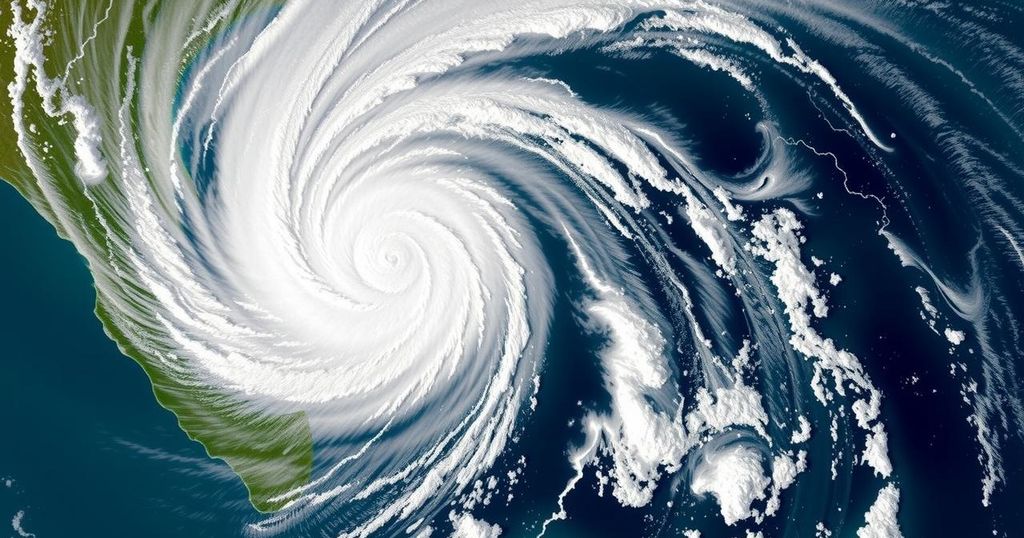Storm Dikeledi Heads Towards Mozambique After Wreaking Havoc in Madagascar and Mayotte

Tropical storm Dikeledi moved towards Mozambique after causing three deaths in Madagascar and triggering floods in Mayotte. It weakened to a severe tropical storm, maintaining a red alert in Mayotte due to potential severe weather. Heavy rainfall and destructive winds are expected in Mozambique as Dikeledi approaches, following recent traumas from Cyclone Chido.
On Monday, tropical storm Dikeledi continued its path towards Mozambique after leaving devastation in Madagascar, where it claimed three lives and caused severe flooding in Mayotte, a French territory, just weeks following the catastrophic impact of Cyclone Chido. Initially making landfall as a cyclone in Madagascar, Dikeledi brought intense winds and heavy rainfall, leading to the issuance of a red alert in Mayotte to ensure the safety of its vulnerable population as the storm approached nearby regions.
The storm weakened from its initial cyclone status to a severe tropical storm by Sunday, passing relatively close to Mayotte at approximately 100 kilometers. In light of ongoing hazardous weather, Mayotte’s prefect Francois-Xavier Bieuville reinforced the red alert, stating, “We have a territory that is very fragile so I decided to keep this red alert.” Significant rainfall was anticipated, creating concern for local authorities as the region had recently endured the devastating effects of Cyclone Chido, which resulted in 39 fatalities and widespread destruction.
As of early Monday, Dikeledi was approximately 150 kilometers offshore, poised to intensify over the Mozambique Channel as it approached the coast. Residents in Mayotte remained indoors following travel bans due to the red alert, although some ventured out in defiance to undertake necessary errands. With over 4,000 personnel deployed in relief efforts and accommodation centers established, authorities prepared for Dikeledi’s impact as it threatened regions in Mozambique, particularly the Nampula area, which faces projected severe weather conditions.
This cyclone season, occurring from November to March, has demonstrated an alarming increase in storm intensity, attributed to elevated sea surface temperatures within the Indian Ocean, indicative of broader global warming trends. Mayotte’s inhabitants expressed their trauma and anxiety from the cyclical nature of such disasters, with residents like Massa conveying their sentiments of despair following the string of impactful storms.
Cyclones regularly form in the Indian Ocean from November to March, with the current season seeing alarming trends in storm intensity likely associated with climate change phenomena. This year, the warm sea surface temperatures have reached around 30 degrees Celsius, providing ideal conditions for cyclonic development. The region is still recovering from prior storms, including Cyclone Chido, which left significant damage and a high casualty count, further highlighting the ongoing vulnerability of coastal territories like Mayotte and the northern regions of Madagascar as they face repeated natural disasters.
Tropical storm Dikeledi’s trajectory towards Mozambique underscores the ongoing challenges faced by regions accustomed to the cyclone season, particularly after the devastation wrought by Cyclone Chido. With preparations underway to mitigate expected impacts, the situation remains precarious for communities in Mayotte and Mozambique. The compounded trauma of successive storms raises critical questions about disaster preparedness amid changing climate patterns and increasing cyclone intensity.
Original Source: www.bryantimes.com








